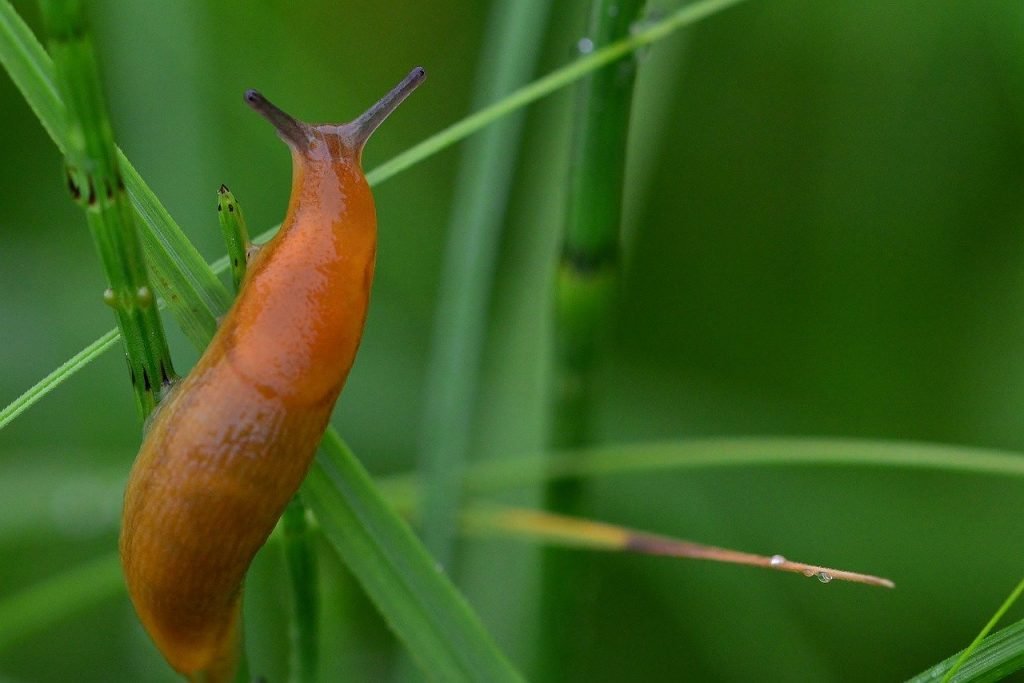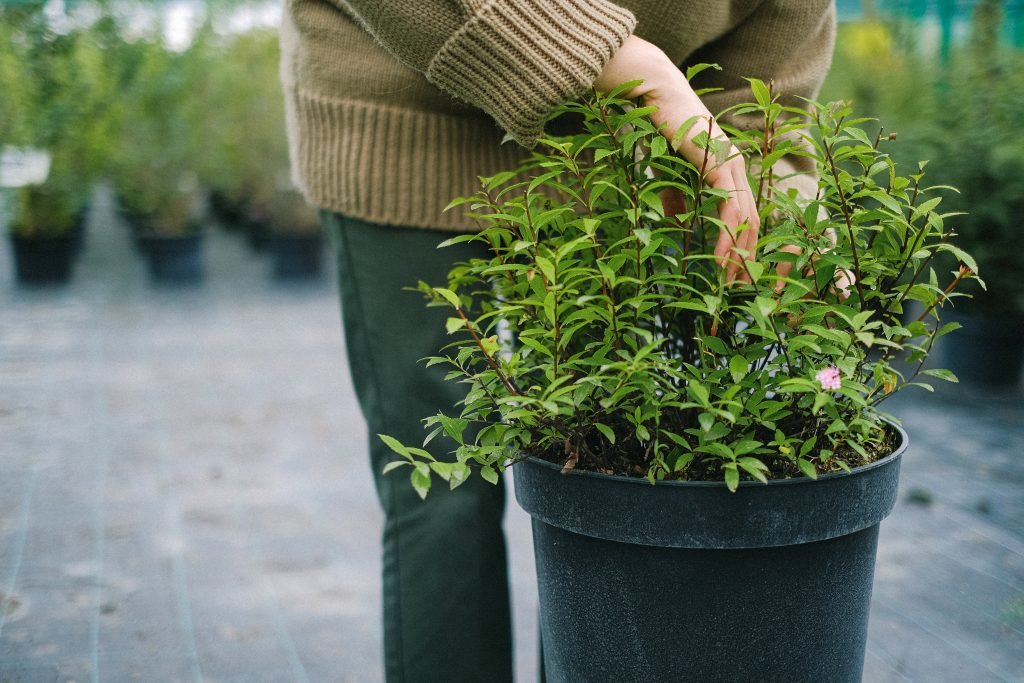How to Get Rid of Slugs and Snails on Your Cannabis Plant Leave a comment
For any gardener, pests are frustrating when you have taken the time to lovingly care for your plants. When growing outdoors, it is likely that at some point, you will encounter some type of annoying pest.
Slugs and snails are common pests, that move slow but eat fast and can ruin your plants. Both animals are pretty similar, with slugs being around an inch long, and squidgy in texture. Snails have the protected ‘home’ on their backs. Both creatures can cause harm to your plants, so you will want to remove them as soon as you spot the signs.
Many gardeners face the question of how to get rid of slugs and snails, and in this post, we will explain some handy tools and tricks you can use.
So, what are the signs of slugs and snails in your garden?
You may be able to spot the damage to your plants before you actually see these pests, or hopefully, you will spot any slugs or snails in your garden before they get a chance to ruin your plants.
One of the first signs that you have either slugs or snails in your garden is the unmistakable gooey, silvery slime trail they leave behind. You might see these slime trails close to your plant, on the ground, or on the leaves of your plant.
Snails and slugs may also come out a little a little earlier than other animals, in the spring season, so keep an eye out for them during this time.
You may spot holes on your cannabis plants leaves, often with uneven edges. Not to be confused with caterpillar holes, slug holes will have jagged edges where you can see the small bites they have taken. If you have recently planted a seedling, the slug or snail may even eat the fresh leaf, leaving the stem behind, and ruining the new leaf coming through.
Slugs and snails will often go for the newest leaves on your cannabis plant, with the jagged holes evening out as more damage is done. If caught early, you will still be able to save your plant without too much damage being done. However, if left for too long, the pests will eat most of the leaves and your plant will not recover.
Slugs and snails are also more likely to eat plant leaves during the night, and will hide under plant pots, bricks and anywhere else they can find.

How to Get Rid of Slugs and Snails
Whilst you will want to remove the majority of slugs and snails from your plants, it is worth noting that these animals form a part of the ecosystems, so you may not want to entirely destroy them. Moving them away to another area may be more beneficial.
Here are a few methods on how to get rid of slugs and snails and lower the risk to your cannabis plants.
Attract natural predators to your garden
Encouraging a natural predator of these annoying little pests to your garden is a great way to get rid of slugs and snails, without using any harsh chemicals. Not only does your snail problem get easier, but it will also be providing a meal to help the predator stay alive.
Natural slug and snail predators include hedgehogs, newts, toads, and birds. In Australia, as these creatures were introduced, there are fewer natural predators, but some species will eat slugs and snails. These include some bird species, such as kookaburras, magpies, and starlings, and other animals such as rats, lizards, ducks, chickens, frogs, some beetles, and centipedes.
Creating a pond in your garden can attract some of these natural predators.
Remove them yourself
To start to process of getting rid of slugs and snails in your garden, you may want to remove as many as you can find. Put on some gloves and head out around two hours after sunset, as this is when they are likely to appear. Using a torch, go around your garden to all the places you may be likely to find them. This could be under leaves, under plant pots or bricks, any cool, dark places, or in long grass.
You can then take the snails away from your plant, into a natural area to release them.

Clean up your garden
You can help to reduce the likelihood of slugs and snails finding a home in your garden by removing unnecessary things that could make a nice home for them. Removing any garden waste and any pots or random bits and bobs lying around. Check around your compost area and remove any snails as you find them.
Use nematodes in your soil
Nematodes already appear naturally in soil and are microorganisms that not only increase the quality of your soils, but also act as a natural pesticide and can kill slugs and snails.
These small worm type microorganisms kill their prey by either actively attacking it or sitting patenting waiting for their prey to come to them. When they attack their prey, it will release a toxic bacterium, that will eventually kill the intended preyed after a few days.
Whilst these toxins may kill a slug or snail, the nematodes do not produce toxins to humans or animals with warm blood, so it can be a great method for those who have pets in their garden.
Not only this, but some beneficial type of nematodes can also actually break down organic matter in the soil, spreading it out and allowing other organisms to break it down even more. This will eventually lead to more nutrients in your soil.
You can buy nematodes from your local garden centre or online store and will apply them directly to your soil. They can come in a variety of forms such as clay, gels, and granules.
Try copper banding
Putting some copper banding at the base of your plant is said to be a great way to deter slugs and snails eating your plants. When they touch the copper, it gives them almost an electric shock feeling, and will help to keep them away from your plants. Copper banding is also non-toxic and cannot cause any harm to pets or children, plus it is also long lasting.
Feed them beer
This is a well-known classic on how to get rid of slugs and snails from your garden, as they love the yeast in stale beer. Using some cheap beer (you do not want to be using the good stuff!), place a bowl of it into your garden, close to your plants. The bowl should be shallow, around 1 to 2cm off the ground, so the slugs can easily climb in.
You can also try wine or even some vegemite mixed with water!
Create some snail traps
You could also try deliberately creating a home snails and slugs may like at different points in your garden, away from your plants. Keep a regular check on these ‘homes’ and remove the snails as you find them. This way, you are likely to know where to find them and get to the pests before they find your plants!
Anything like broken terracotta pots, bricks, under logs and stones, or anywhere that is dark, cool, and damp, is where you will find them.
Grapefruit and oranges

Another natural method for trapping slugs and snails in your garden, is by using grapefruit and orange halves. To create your trap, spoon out any pulp from your orange or grapefruit and leave the skin face down in your garden bed. Be sure to leave a little gap for the slug or snail to enter, and by morning you may find this is where they have all congregated. You are them free to get rid of them, or even better, moving them on to find another home in a natural woodland.
Coffee grounds
Sprinkle some coffee beans over your soil, and this may help to deter any slugs and snails from reaching your cannabis plants. If this does not seem to be doing the trick, you can also try mixing up a strong solution of coffee and spraying the pests directly.
Homemade garlic spray
If you want to use a natural pesticide, try making your own garden sprays. This garlic spray can kill small animals or act as a deterrent. To make, crush a whole garlic bulb and pour over some vegetable oil, covering it completely. Leave this mixture to rest for two days before draining off the liquid. Add a bit of liquid soap or dishwashing liquid and place in a spray bottle. Use a ratio of one millilitre of garlic mixture to one litre of water, and spray over the bugs.
Create a dry barrier
Snails and slugs dislike dry surfaces, so creating a barrier between them and your plants is a great deterrent. Create a line of sawdust or ash around the base of your plants. This will help stop the snails from going any further. However, the only disadvantage to this method is that it is no longer effective once it rains or becomes wet. You could also try using a superphosphate fertiliser or crushed eggshells around the base of your plants.
Snail and slug bait
You can buy pesticides and other types of bait, but always use with caution. While some are less harmful than others, some may be harmful to pets or children, and even other animals in your garden. Try using this method as a last resort or speak to staff at your garden centre to go the best ways about it.
We hope this post on how to get rid of slugs and snails was helpful. If you are looking for more information, you can always check our helpful resources pages on our site







